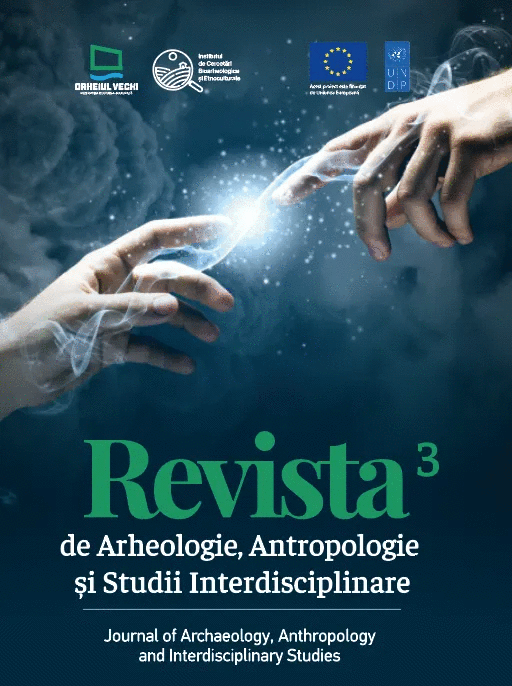Обычай искусственной деформации г оловы (черепа) на территории Азербайджана, Кавказа и Ближнег о Востока (неолит-халколит)
A custom of artificial head (cranial) deformation on the territory of Azerbaijan, Caucasus and Near East (Neolithic-Chalcolithic)
Author(s): Dmitriy A. KirichenkoSubject(s): Archaeology, Ancient World
Published by: Bons Offices – Casa Editorial-Poligrafică
Keywords: Azerbaijan;Caucasus;Near East;artificial head (cranial) deformation;craniometry;Neolithic;Chalcolithic;
Summary/Abstract: The aim of this paper is to make a synthesis of the archaeological findings of artificially deformed skulls from the Neolithic and Chalcolithic from Azerbaijan, Caucasus and Near East. Three main methods of artificial deformation of the head (skull) were widely popular in this region: circular, fronto-occipital and parietal. Apart from intentional deformation, there are also cases of accidental deformation: cradle (beshik) and tumpline deformations. Modified skulls were found on the territory of South Caucasus and the Near East in the following Neolithic-Chalcolithic archaeological sites: Polutepe, Ismayilbeytepe (Azerbaijan); Chiaturi (Georgia), Aknalich (Armenia); Ginchi, Velikent III (Dagestan, Russian Federation); Mugharet el-Wad (Israel); Jericho (Palestine); Byblos (Lebanon); Tell Ramad, Buqras (Syria); Ain-Jebrud (Jordan), Tepe Ganj Dareh, Ghenil Tepe, Ali Kosh, Chogha Sefid, Qumrud, Tepe Sialk, Tepe Abdul Hosein, Chogha Mish, She Gabi (Iran); Khirokitia, Mylouthkia, Erimi, Karavas (Yirisma) (Cyprus); Shanidar, Eridu, Tell Arpachiyah, Tell Nader, Telul eth-Thalahat (Iraq); Ashikli Höyük, Salat Jami, Hakemi Use, Sheyh Höyük, Gözlü Kule, Kurban Höyük, Degirmantepe, Baklatepe, Chadyr Höyük, Arslantepe (Turkey). The Polutepe female skull has frontal-occipital deformations combined with cradle deformation. It is similar, considering the methods of deformation, to the artificially deformed skulls from Tepe Ganj Dareh, Tepe Abdul Hosein, Tell Arpachiyah (skull E) and Khirokitia. Most likely, the custom of artificial deformation of the head came to Azerbaijan and Caucasus in Neolithic-Chalcolithic period form the Near East. The skull from Polutepe is the earliest finding of artificially deformed skulls on the territory of Caucasus (the second half of 5th - beginning of 4th millenium BC).
Journal: Revista de Arheologie, Antropologie și Studii Interdisciplinare
- Issue Year: 3/2021
- Issue No: 1
- Page Range: 37-56
- Page Count: 20
- Language: Russian

